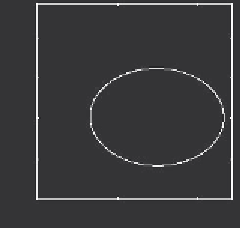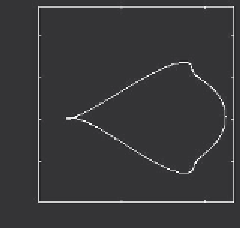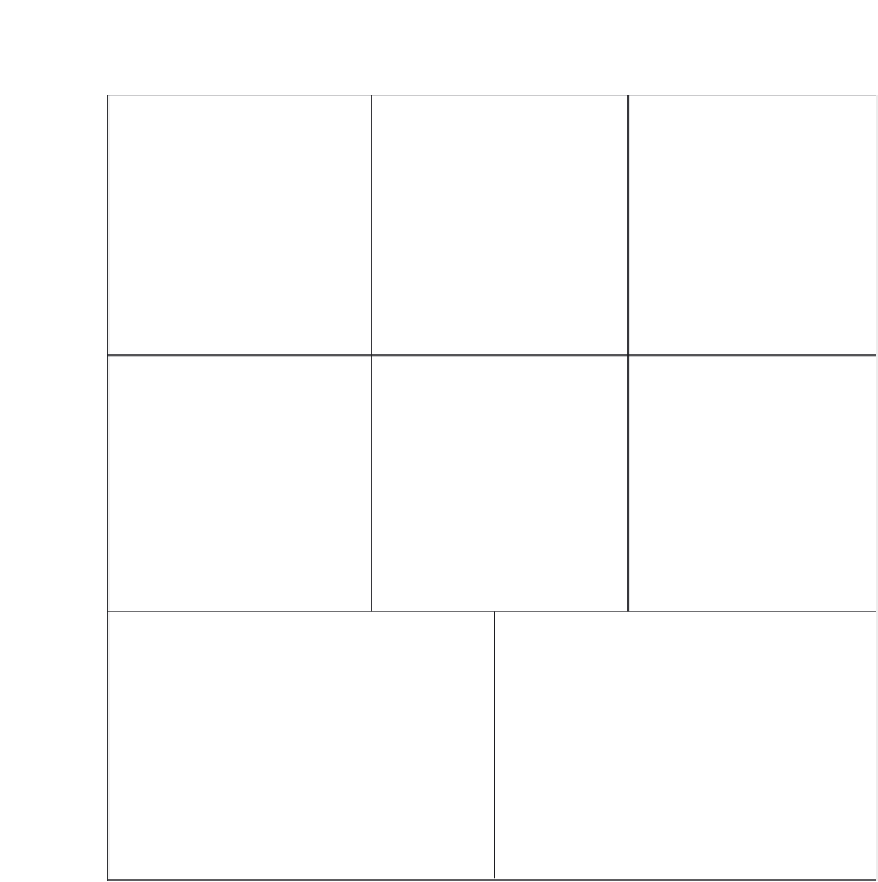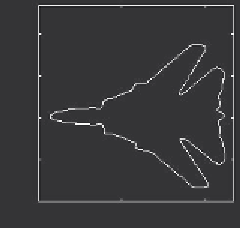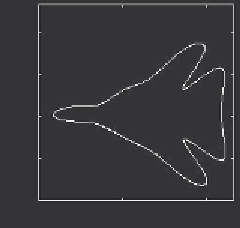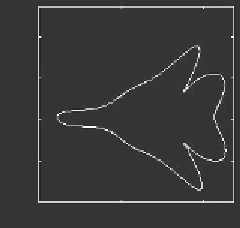Image Processing Reference
In-Depth Information
200
200
200
150
150
150
100
100
100
50
50
50
0
0
0
0
0
100
200
100
200
0
100
200
(a) 1 coefficient
(c) 4 coefficients
(b) 2 coefficients
200
200
200
150
150
150
100
100
100
50
50
50
0
0
0
0
0
0
100
200
100
200
100
200
(d) 6 coefficients
(e) 8 coefficients
(f) 12 coefficients
200
200
150
150
100
100
50
50
0
0
0
0
100
200
100
200
(g) 20 coefficients
(h) 50 coefficients
Figure 7.17
Fourier approximation
can be explained by discretisation errors. However, the coefficients remain the same after
changing its location, orientation and scale. The descriptors of the curve in Figure
7.18
(i)
(B1 bomber) are clearly different, showing that elliptic Fourier descriptors truly characterise
the shape of an object.
Fourier descriptors are one of the most popular boundary descriptions. As such, they
have attracted considerable attention and there are many further aspects. Naturally, we can
use the descriptions for shape recognition (Aguado, 1998). It is important to mention that
some work has suggested that there is some ambiguity in the Fourier characterisation.
Thus, an alternative set of descriptors has been designed specifically to reduce ambiguities
(Crimmins, 1982). However, it is well known that Fourier expansions are unique. Thus,
Fourier characterisation should uniquely represent a curve. Additionally, the mathematical
opacity of the technique in Crimmins (1982) does not lend itself to tutorial type presentation.
